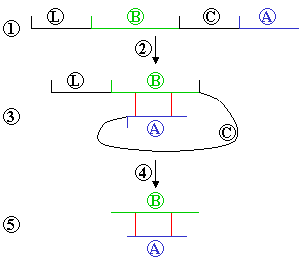Pioglitazone has CV benefits in people with type 2 diabetes
The landmark PROactive study has shown that by adding pioglitazone (Actos; Takeda) to optimal standard therapy, GPs can significantly reduce the risk of death, stroke or heart attack in high-risk patients with type 2 diabetes.
[ILLUSTRATION OMITTED]
The prospective, randomised study, presented at the EASD Annual Meeting, involved 5328 patients from 19 countries. Patients had been diagnosed with type 2 diabetes for an average of 9.5 years, and each had suffered at least one previous macrovascular event.
As well as the 16% reduction in the risk of death, stroke or heart attack (P=0.027), pioglitazone was associated with significant improvements in Hb[A.sub.1c], lipid profile and systolic blood pressure. Given that patients were already taking a number of concomitant medications (including statins, anti-hypertensive agents, anti-platelet treatments and other anti-diabetic therapies), it is of significance that the benefits observed with pioglitazone were above those achieved using the best available diabetic and cardiovascular therapies.
Dr Mike Mullin, GP Trainer and Diabetic Lead, Danebridge Medical Centre, Cheshire, said: 'We have known for some time that glitazones improve cardiovascular risk parameters such as hypertension, dyslipidaemia, and hyperglycaemia. However, until now, there has been no solid evidence to translate these observations into direct clinical outcomes. The PROactive study now shows that by prescribing pioglitazone to type 2 diabetes patients at high cardiovascular risk, we are giving them the best possible chance of avoiding a life-threatening macrovascular event.'
New guidelines for managing type 2 diabetes launched by IDF
The International Diabetes Federation launched an evidence-based guideline for the management of type 2 diabetes worldwide. The guideline calls for a more aggressive approach to the management of the condition than previous ones.
The guideline recommends treating to an Hb[A.sub.1c] target of <6.5% in order to reduce the risks of developing one or more of the many diabetes related complications, such as those of the eyes, heart, kidneys and feet.
Insulin glulisine improves postprandial glycaemic control
Findings presented at the EASD Annual Meeting showed that people with type 2 diabetes receiving insulin glulisine (a rapid-acting human insulin analogue; Apidra; Sanofi-Aventis) in combination with NPH insulin achieved better postprandial glycaemic control with fewer nocturnal hypoglycaemic episodes than those receiving regular human insulin. The results come from a study involving 892 people.
On 26 September 2005, insulin glulisine, was made available in the UK for people with diabetes who need a basal-bolus insulin regimen. It is available as a solution for injection in a phial or a cartridge.
Exenatide's glycaemic effect equal to insulin glargine's
Exenatide (Byetta; Eli Lilly/Amylin) improves glycaemic levels as effectively as insulin glargine (Lantus; Sanofi-Aventis) for people with type 2 diabetes failing to achieve acceptable glycaemic control on both metformin and sulfonylurea, according to results presented at a satellite meeting to the EASD Annual Meeting.
[ILLUSTRATION OMITTED]
In the 26-week, randomised, open-label, parallel-group study (n=551), people on exenatide lost an average of 2.3 kg in weight, while people on insulin glargine gained an average of 1.8 kg.
EASD and ADA ask for more clarity on metabolic syndrome
Representatives from the EASD and American Diabetes Association (ADA) called for a closer examination of the 'metabolic syndrome' at the EASD Annual Meeting, questioning whether it has been appropriately defined and whether it is a syndrome at all.
The two associations argue that the metabolic syndrome, now regarded as a predictor of cardiovascular disease, is poorly defined, inconsistently used and in need of further research to understand whether and how it should be treated. Until the science behind the 'syndrome' is clear, say the associations, doctors should not be diagnosing people with it or attempting to treat it as a separate condition.
In the meantime, say the associations, doctors should aggressively treat individual cardiovascular risk factors and avoid labelling patients with the term 'metabolic syndrome'.
[ILLUSTRATION OMITTED]
Positive evidence presented for DPP-IV inhibitors
The EASD Annual Meeting saw results being presented on two investigational dipeptidyl peptidase (DPP)-IV inhibitors now in Phase III.
Clinical data from a Phase IIb trial showed that patients receiving oral vildagliptin (Novartis) and metformin in combination for 1 year experienced an increased insulin response after eating a meal compared with those taking metformin alone. These effects were seen at 12 weeks and sustained for 1 year.
In another 12-week study, sitagliptin (Merck & Co) lowered Hb[A.sub.1c] as effectively as glipizide, but was associated with fewer hypoglycaemic episodes and, unlike glipizide, was not associated with weight gain.
Insulin detemir shown to limit weight gain in type 2 diabetes
Insulin detemir (Levemir; Novo Nordisk) has been shown to limit weight gain in people with type 2 diabetes initiated on insulin.
A multi-national, 24-week trial of 475 people with poorly controlled blood glucose using oral antidiabetic agents found that participants randomised to insulin detemir gained an average of 1.2 kg compared with an average gain of 2.8 kg for those randomised to intermediate-acting (NPH) insulin (P<0.05).
COPYRIGHT 2005 S.B. Communications
COPYRIGHT 2005 Gale Group

![The structure of insulin Red: carbon; green: oxygen; blue: nitrogen; pink: sulfur. The blue/purple ribbons denote the skeleton [-N-C-C-]n in the protein's amino acid sequence H-[-NH-CHR-CO-]n-OH where R is the part protruding from the skeleton in each amino acid. The structure of insulin Red: carbon; green: oxygen; blue: nitrogen; pink: sulfur. The blue/purple ribbons denote the skeleton [-N-C-C-]n in the protein's amino acid sequence H-[-NH-CHR-CO-]n-OH where R is the part protruding from the skeleton in each amino acid.](pics/Apidra_1.jpg)
